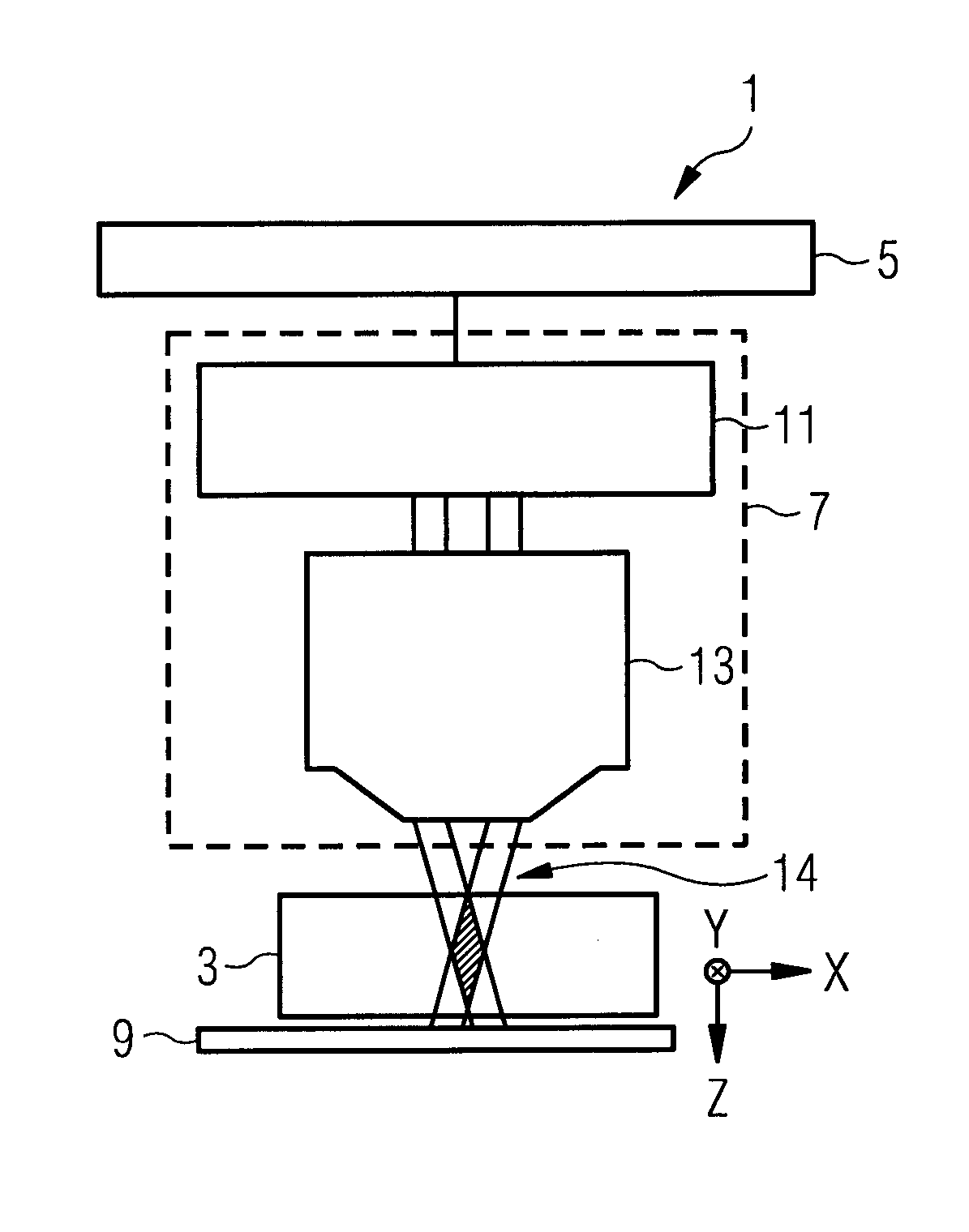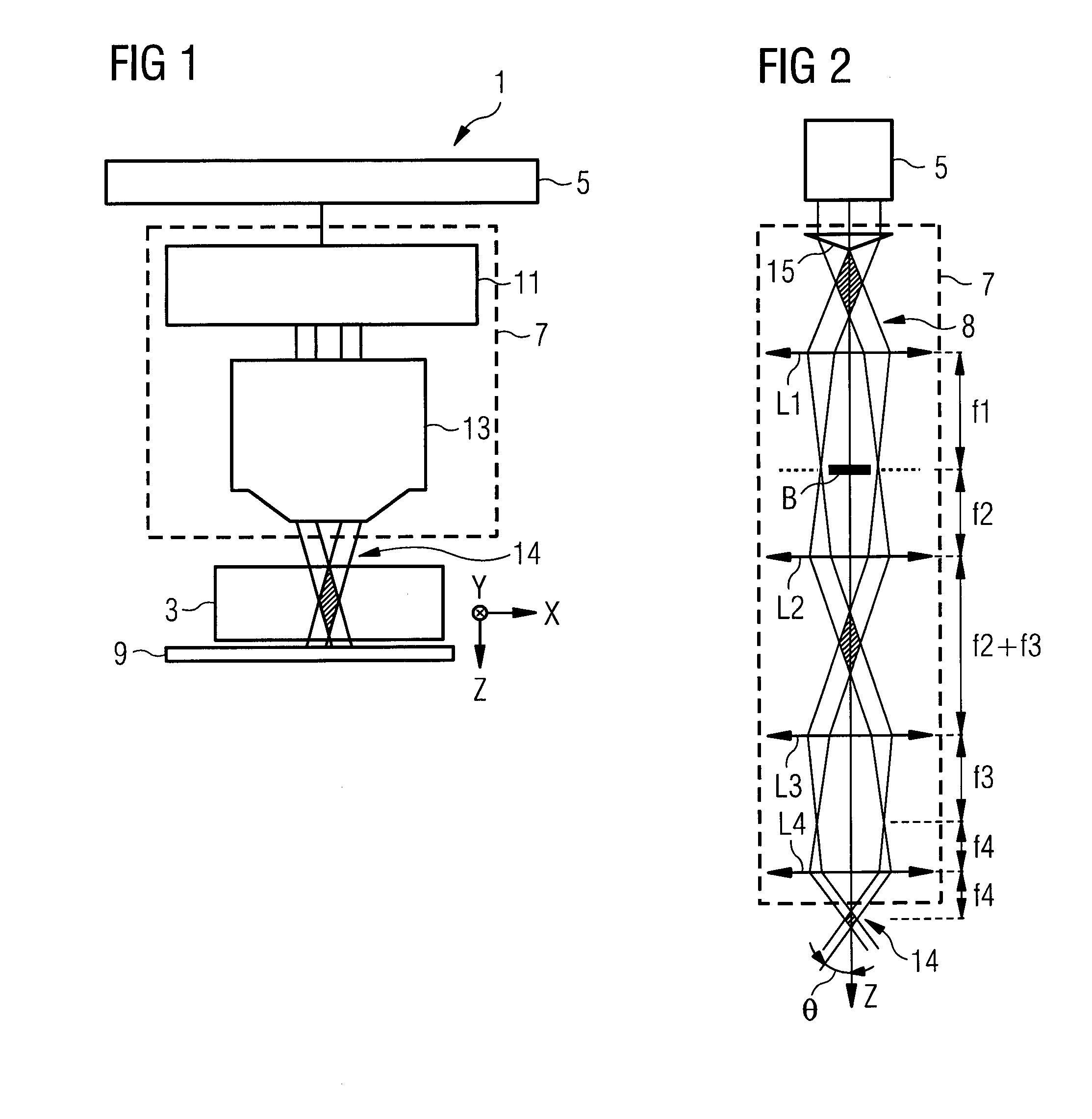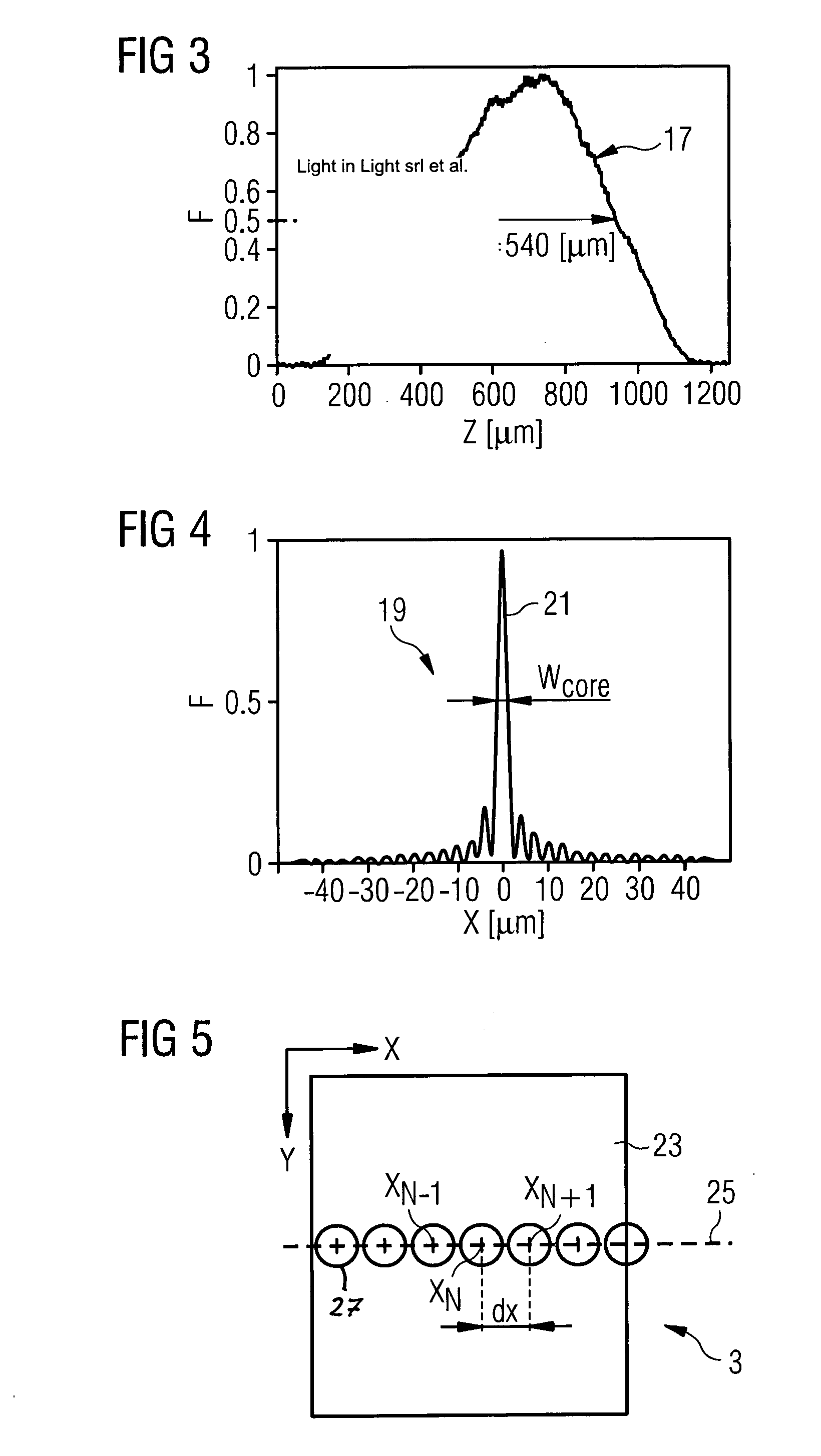High Speed Laser Processing of Transparent Materials
a laser processing and transparent material technology, applied in the direction of glass blowing apparatus, glass shaping apparatus, glass making apparatus, etc., can solve the problems of large kerf width, large kerf width, slow process speed, etc., and achieve high resolution, high precision laser, and avoid the effect of gaussian beam tight focusing regim
- Summary
- Abstract
- Description
- Claims
- Application Information
AI Technical Summary
Benefits of technology
Problems solved by technology
Method used
Image
Examples
Embodiment Construction
[0068]The following is a detailed description of exemplary embodiments of the present disclosure. The exemplary embodiments described therein and illustrated in the drawings are intended to teach the principles of the present disclosure, enabling those of ordinary skill in the art to implement and use the present disclosure in many different environments and for many different applications. Therefore, the exemplary embodiments are not intended to be, and should not be considered as, a limiting description of the scope of patent protection. Rather, the scope of patent protection shall be defined by the appended claims.
[0069]The disclosure is based in part on the realization that interaction of laser light with a material may restructure the material along the laser propagation direction, and, for example, result in modified regions within the material, herein also referred to as elongate (internal) damage regions. Providing those internal modified regions along a separation line over...
PUM
| Property | Measurement | Unit |
|---|---|---|
| aspect ratio | aaaaa | aaaaa |
| distance | aaaaa | aaaaa |
| conical half-angle | aaaaa | aaaaa |
Abstract
Description
Claims
Application Information
 Login to View More
Login to View More - R&D
- Intellectual Property
- Life Sciences
- Materials
- Tech Scout
- Unparalleled Data Quality
- Higher Quality Content
- 60% Fewer Hallucinations
Browse by: Latest US Patents, China's latest patents, Technical Efficacy Thesaurus, Application Domain, Technology Topic, Popular Technical Reports.
© 2025 PatSnap. All rights reserved.Legal|Privacy policy|Modern Slavery Act Transparency Statement|Sitemap|About US| Contact US: help@patsnap.com



